An abundance of well-qualified applicants compete for too few slots
By JULIE MINDA
This much is evident: There is a significant and long-running shortage of nurses; the pressures of the pandemic worsened the problem; and shortages are expected to grow.
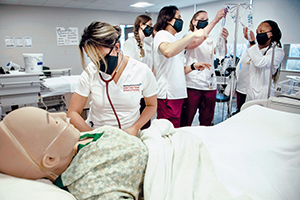
Nursing student Emily Guttierrez checks vital signs on a medical manikin as students learn to hang medication on an IV pole last year. They were in a simulation classroom at the Sister Claire Tynan School of Nursing in Englewood Cliffs, New Jersey.
The nursing school is affiliated with Holy Name hospital.
Credit: Jeff Rhode/Holy Name
Some administrators of Catholic nursing schools say there are intractable reasons that schools can't keep up with demand including a shortage of teaching faculty, which limits student enrollment. Generally speaking, nurse faculty members can earn significantly
more money nursing than teaching. In 2020, 80,521 qualified applications were not accepted at schools of nursing due primarily to a shortage of clinical sites, faculty and resource constraints, according to results of a survey conducted by the American
Association of Colleges of Nursing.
The association of nursing colleges says the nation's nursing schools are graduating more nurses than ever before, but it's
not enough.
What is more, nursing shortages in hospitals have a cascading impact. Overworked and overwhelmed nurses are calling it quits at alarming rates, others near retirement have taken that option during the pandemic.
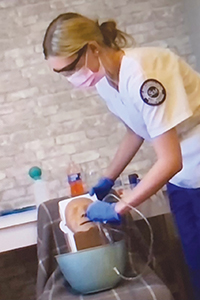
Nursing student Taylor Turman practices inserting a nasogastric tube on a trainer manikin in January 2021. Turman is a student of the St. Mary's School of Nursing and Health Professions in Huntington, West Virginia.
The nursing colleges association report warns: "Insufficient staffing is raising the stress level of nurses, impacting job satisfaction, and driving many nurses to leave the profession." It adds that nurse retirement and turnover rates are negatively
affecting the quality of health care. For instance, a study cited in the report found that higher patient loads were associated with higher hospital readmission rates.
Same old song
Although the dynamics of the nurse workforce and nurse faculty shortage were amplified by the pandemic, the conditions are not new, says Mary Ellen Smith Glasgow, dean and professor at Pittsburgh's Duquesne University
School of Nursing and vice provost for research for the university's Office of Research and Innovation.
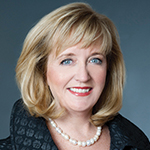
Glasgow
She adds, "Nursing entered 2021 with a shortage, which has been exacerbated by the resurgence of COVID-19 worldwide and the resultant mental health strain on health care providers, the exodus of many providers, including nurses, and the growing public
dissension related to the pandemic."
McKinsey & Company said 22% of the 400 frontline nurses participating in its 2021 Future of Work in Nursing Survey, conducted early last year, said they might leave their current job within the year. Six of 10 respondents in this group said they were
more likely to leave since the pandemic began.
According to a May 11 article on the survey
and on the nursing workforce published on the McKinsey website, the desire to move on is "driven by a variety of factors, with insufficient staffing, workload, and emotional toll (of the pandemic) topping the list." Of those nurses who said they may
leave their jobs, over half said they were seeking another career path, a nondirect care role, or were planning to retire or leave the workforce entirely.

Trocchio
Julie Trocchio is CHA senior director of community benefit and continuing care, and she convenes the deans of Catholic nursing schools several times a year to network and share strategies. She says the nurse shortage problem is especially pressing in
long-term care facilities, which can have trouble competing against acute care sites when it comes to pay. President Joe Biden said in his state of the union address that the White House is proposing new staffing requirements for long-term care sites,
including increased nurse staffing.
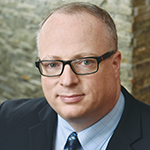
Trader
Joey Trader is vice president of the St. Mary's School of Nursing and Health Professions and he directs the nursing school. The programs are affiliated with St. Mary's Medical Center of Huntington, West Virginia, part of the Mountain Health Network. Trader
says many health care facilities must pay overtime and travel nurse salaries to fill out staff rosters.
He says despite challenges, he's not had a problem recruiting faculty or nursing students, thanks in part to Mountain Health Network's nursing tuition assistance program announced in late January.
Great prospects
Trader and other nursing school administrators say interest remains high in nursing as a career.
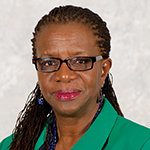
Yearwood
Edilma Yearwood chairs the department of professional nursing practice and is an associate professor in the School of Nursing and Health Studies at Georgetown University. She says, "We saw more applications last year than in prior years, though we are
limited in how many students we can take in. As I talk with students, I hear them say that they feel very strongly that they are in the right place, and they are fully committed to do what they need to do as a nurse. The pandemic has unleashed a deeper
commitment for the mission."
Trocchio, who is a graduate of Georgetown's nursing school, says when nursing is taught in the context of mission, both nursing and health care benefit.
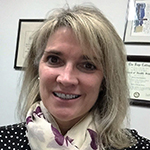
Cannistraci
Patricia Cannistraci, dean of the Samaritan Hospital School of Nursing, says, "Our school is graduating a steady group of nurses who are workforce-ready, and we have had — even through the pandemic — an incredibly high pass rate for nursing
boards." Samaritan is one of two nursing schools within St. Peter's Health Partners in Troy, New York. St. Peter's Health Partners is part of Trinity Health. Its other nursing school, St. Peter's Hospital College of Nursing, is affiliated with St.
Peter's Hospital in Albany, New York.
The nursing colleges association found in a survey conducted in fall 2020 that there
were significant increases in enrollment in entry-level baccalaureate, master's and doctor of nursing practice programs. (The report did not mention associate nursing degrees.)
Nursing programs offered at the baccalaureate degree levels and above have seen more than 15 years of continuous enrollment growth. The association said in a press release that "though interest in baccalaureate and graduate nursing programs is strong,
thousands of qualified applicants are being turned away from four-year colleges and universities."
Feeder systems
Hospital-affiliated nursing schools were created to keep a steady flow of new nurses to replenish staff. Although it's the rare hospital that has its own nursing school now, the feeder system may be even more important
as competition for nurses intensifies.
Before the pandemic, Cannistraci says, St. Peter's two nursing schools had forged a relationship with the College of Saint Rose in Albany, New York. Students attend St. Peter's schools to earn an associate degree. Those who choose to pursue a bachelor
of science in nursing and enroll at the College of Saint Rose to do so can complete their clinical hours at St. Peter's health care facilities.
St. Peter's Samaritan also offers a 12-month program that leads to a licensed practical nurse certificate. "LPNs helped to bridge some staffing needs in the acute care setting during COVID," Cannistraci says. "Hospitals are now considering bringing LPNs
back into acute care on a regular basis."
Administrators from Catholic nursing schools that are owned by or in the same system as hospitals say the movement of staff between the schools and hospitals has allowed for some protection from the more severe faculty and clinician shortages.
As hospital nurse shortages have worsened during the pandemic, the level of partnership between the hospitals and nursing schools has intensified. Cannistraci says staff and students at St. Peter's nursing schools — including Cannistraci herself
— volunteered for shifts at the hospital. And the hospital and nursing school started a program that enabled students to work as patient care technicians in units strapped for clinicians. The students gained valuable experience — and confidence,
says Cannistraci.
Similarly, faculty and students at the Sister Claire Tynan School of Nursing at Holy Name hospital of Englewood Cliffs, New Jersey, volunteered at the hospital at COVID screening sites, in the COVID intensive care unit and in monoclonal antibody treatment
units, says nursing school director Donna M. Penn.
Matchmaking
CHA aims to play a role in encouraging relationship-building between Catholic hospitals and nursing schools. Loren F. Chandler, the association's chief operating and finance officer, says ministry chief executives report
their systems are finding it difficult to match up with nursing schools looking for hospitals where students can complete practicums. As a result, their facilities are losing out on the opportunity to build connections with nursing students that could
give them a leg up in recruiting new nursing grads.
CHA is convening Catholic health care executives to explore ways to establish a stronger pipeline between both Catholic and secular nursing schools and nearby Catholic health care facilities. They'll develop messaging that distinguishes Catholic hospitals
from competitors. One goal of stronger school-hospital affiliations would be to grow the enrollment capacity of the nursing schools.
CHA's Trocchio says, "Connecting Catholic health care with Catholic and other schools of nursing is an important step toward addressing our workforce needs. In the years CHA has convened the deans of Catholic schools of nursing, many have expressed hope
that the tie between education and practice could be even stronger."
Catholic nursing schools seek increased funds for nurse education
Nursing schools do not have the capacity to educate more nursing students to meet the high demand, and this is in large part because they do not have the funds to hire enough faculty.
Catholic nursing school leaders are calling upon government entities at the federal and state level to increase funding for nurse education. This includes scholarship and grant dollars as well as fixes to payment systems, they say.
Edilma Yearwood chairs the department of professional nursing practice and is an associate professor in the School of Nursing and Health Studies at Georgetown University. She says the school plans to seek additional funds from the Health Resources
and Services Administration, part of the U.S. Department of Health and Human Services.
"Everyone is aware that we have a shortage (of nurses), so the time is now to have deep conversations and state clearly what we need — scholarship dollars — to support students coming into the profession," she says. Those scholarship
dollars, when paid as tuition, would help boost the school's financial position, paving the way for more hiring.
Patricia Cannistraci, dean of the Samaritan Hospital School of Nursing, one of two nursing schools within St. Peter's Health Partners in Troy, New York, says, "Catholic health care needs to be around the table of policymaking where decisions are
made."
The nursing schools are doing some of the lobbying directly and some through associations including the American Nurses Association and its American Nurses Credentialing Center as well as the National Coalition of Hospital Associated Schools &
Colleges of Nursing.
Cannistraci says St. Peter's nursing schools have been part of the chorus calling for HHS and the Department of Education to increase funding so that more faculty can be educated and hired. Nursing schools have been lobbying for the Health Resources
and Services Administration to develop nurse residency programs and/or to develop a nursing center of excellence to take a comprehensive approach to the issue.
Donna M. Penn, who directs the Holy Name medical center Sister Claire Tynan School of Nursing in New Jersey, says that nursing school is among many organizations supporting the Technical Reset to Advance the Instruction of Nurses, or TRAIN, Act.
The legislation would correct payment issues of the Centers for Medicare & Medicaid Services.
According to a letter the American Hospital Association sent to U.S. senators to support the TRAIN Act, Medicare has been making incorrect payments to both hospital-based nursing and allied health education programs and direct graduate medical
education programs due to miscalculations. CMS has called for the recalculating of the formula and a recouping of misallocated funds, a move that critics say will financially harm the facilities. The TRAIN Act would stop the clawback.
Penn says it may be difficult for some hospitals to continue offering nursing school programs if the TRAIN Act does not pass.
Joey Trader is vice president of the St. Mary's School of Nursing and Health Professions and he directs that Huntington, West Virginia, nursing school. He says nursing schools in that state have been successful in lobbying for some funding —
West Virginia Gov. Jim Justice has allocated $48 million in grants to expand the schools' capacity. The grants will fund faculty recruitment and retention efforts. St. Mary's also is applying for grant dollars through the Higher Education
Policy Commission of West Virginia.
Yearwood and Cannistraci say their schools are looking into seeking additional philanthropic funds to bolster nursing programs.
Yearwood notes that Georgetown has been intentional in encouraging its nursing students to join advocacy efforts to secure financial resources from governmental agencies.
She says of the nursing students, "We always encourage them to step out of their comfort zone and do more in the larger community."
Yearwood adds that in this way the nursing school prepares students "for the long fight by helping them to learn the tools needed to have a voice in multiple arenas in the health care space. As faculty, our job is to expose them to these issues,
support their passion for advocacy and help them see that the student voice is and can be powerful."
—JULIE MINDA
Nursing schools maintain operations throughout pandemic
Amid the daunting nurse workforce challenges, it is important that nursing schools maintain and expand their capacity, say Catholic nursing school administrators who spoke to Catholic Health World.
They say their schools have been able to keep their nursing programs operating at capacity throughout the pandemic; and despite disruptions to normal operations, the schools generally were able to stay on track with graduation timelines and graduate
rates.
Edilma Yearwood chairs the department of professional nursing practice and is an associate professor in the School of Nursing and Health Studies at Georgetown University. Reflecting the experiences of the other administrators, she says in March
2020 Georgetown's nursing school paused in-person learning and instead delivered lectures over Zoom. Faculty worked with simulation lab operators on-campus to create new simulations that were presented over Zoom to mimic the clinical experience.
In fall 2020, the school began offering the choice of in-person or virtual schooling, with mask rules in place for the students studying in-person. Yearwood says many students cheered the return to in-person learning.

Penn
Donna M. Penn directs the Holy Name Medical Center Sr. Claire Tynan School of Nursing in Englewood Cliffs, New Jersey. The state was an early epicenter of COVID-19 infection. Penn says a perpetual challenge since the pandemic's onset has been
finding slots for clinical rotations necessary for nurse licensure. Senior level nursing students resumed training rotations at clinical sites in May 2020. First year students were able to start clinicals that fall.
Health care facilities have been limiting the number of students who can come in throughout the pandemic, and so there has been great competition among nursing schools for those slots. State nurse licensing boards do not always allow simulated
practice as a substitute for in-person clinical rotations.
All the administrators say some instructors have been less stringent with schoolwork deadlines, to provide flexibility to nursing students who were dealing with their own challenges, including supporting the remote learning of their own kids whose
classrooms had been closed to in-person learning.
But despite all the disruptions, the administrators say they have been able to keep the vast majority of their nursing students on pace to graduate on time.
— JULIE MINDA
Catholic nursing schools offer various paths to licensure
A variety of educational tracks are available to people who wish to become a registered nurse, and Catholic nursing schools vary in the tracks they offer.
Julie Trocchio is CHA senior director of community benefit and continuing care, periodically convenes deans of Catholic colleges of nursing to connect, share ideas and discuss challenges and successes. A former nurse, Trocchio says originally, most Catholic nursing schools offered two year diploma programs. Some Catholic nursing schools closed as a movement took hold nationally for nurses to hold a bachelor's degree over an associate degree.
Some of the national push toward having nurses with a bachelor's degree is related to guidelines the Institute of Medicine (now called the National Academy of Medicine) rolled out in 2010 for the nursing profession in the report "The Future of Nursing: Leading Change, Advancing Health." According to that report, the institute's goal was for 80% of nurses to have a bachelor's degree by 2020.
A May 2021 analysis by the nonprofit website, publichealthmaps.org, shows the U.S. is far short of the goal. "The percentage of registered nurses who hold a bachelor's of science in nursing or higher is at an all-time high with a national average of about 56%, up from about 49% in 2010." Susan C. Reinhard, senior vice president and director, AARP Public Policy Institute and chief strategist of the Center to Champion Nursing in America, is quoted saying that research "links higher levels of education for nurses with safer, high-quality care."
Still, many students choose the associate degree option to more quickly enter the nursing workforce and then pursue a bachelor's degree while working.
— JULIE MINDA